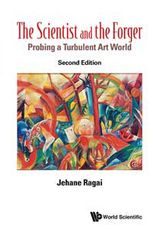
The Scientist and the Forger: Probing a Turbulent Art World (2nd Edition)
Authors : Jehane Ragai (The American University in Cairo, Egypt)
Publisher : World Scientific
ISBN : 978-1-78634-420-5
"This second edition is rendered even more fascinating by the inclusion of case studies that illuminate the complexities, tensions and ambiguities of the fast-expanding international art market."
-- Martin Rees (Lord Rees of Ludlow) OM, FRS, FREng, FMedSc
Astronomer Royal, Former President of the Royal Society and Former Master of Trinity College, Cambridge
"Jehane Ragai incisively opened all the fascinating, unexpected worlds behind her subject — science, sleuthing and skulduggery. Surely there is no more thorough and entertaining scrutiny of the art of forgery."
-- June Mendoza AO, OBE, RP, ROI, HonSWA
Member of the Royal Society of Portrait Artists
"Even the seasoned art historian will learn much from this informative book."
-- Jean Michel Massing
Professor of History of Art, King's College, Cambridge
"There is a richness in details from a selection of cases, and the author is a good story-teller. The book has an important educational role in the professional authentication of art — the book includes a discussion of the most pressing problems today and indicates a possible future development."
-- Prof Bengt Norden
Royal Swedish Academy of Sciences
"Art forgeries is an industry that is growing in size with the increasing value of fine art. Jehane Ragai’s new book is highly recommended for those who want an insight into this obscure fascinating field."
-- Krister Homberg
Former President of the Royal Society of Arts and Sciences, Gothenburg
Member of the Royal Swedish Academy of Sciences
and Royal Swedish Academy of Engineering Sciences
"Building on the strengths of the first edition, the book features a new, captivating series of case studies of famous forgeries, on the one hand, and the authentications of genuine masterpieces, on the other – including Da Vinci’s Salvator Mundi, which, after years of uncertain attribution, recently sold on auction at Christie’s for over 450 million. What really sets this work apart is the careful, accessible account of the scientific tools and methods that make that detective work possible – and the close connection such efforts necessarily have to the art-historical and aesthetic judgement of curators and connoisseurs. This is a book that explores both chemistry and chicanery, the pleasures and outfalls of collecting, and perhaps most interestingly, the psychology of lying, self-deception, and discovery. In many ways, the central question is that of certainty and belief, which the ever-increasing commodification of works of art, and the concomitant increase in the resourcefulness and resolve of forgers, has made more pressing than ever. Whatever the reader’s involvement or perspective on recent events and controversies, the stories recounted here so artfully, along with the scientific techniques explained with such clarity and care, together make for a terrific read."
-- Professor Robert Switzer
The American University in Cairo
-- Martin Rees (Lord Rees of Ludlow) OM, FRS, FREng, FMedSc
Astronomer Royal, Former President of the Royal Society and Former Master of Trinity College, Cambridge
"Jehane Ragai incisively opened all the fascinating, unexpected worlds behind her subject — science, sleuthing and skulduggery. Surely there is no more thorough and entertaining scrutiny of the art of forgery."
-- June Mendoza AO, OBE, RP, ROI, HonSWA
Member of the Royal Society of Portrait Artists
"Even the seasoned art historian will learn much from this informative book."
-- Jean Michel Massing
Professor of History of Art, King's College, Cambridge
"There is a richness in details from a selection of cases, and the author is a good story-teller. The book has an important educational role in the professional authentication of art — the book includes a discussion of the most pressing problems today and indicates a possible future development."
-- Prof Bengt Norden
Royal Swedish Academy of Sciences
"Art forgeries is an industry that is growing in size with the increasing value of fine art. Jehane Ragai’s new book is highly recommended for those who want an insight into this obscure fascinating field."
-- Krister Homberg
Former President of the Royal Society of Arts and Sciences, Gothenburg
Member of the Royal Swedish Academy of Sciences
and Royal Swedish Academy of Engineering Sciences
"Building on the strengths of the first edition, the book features a new, captivating series of case studies of famous forgeries, on the one hand, and the authentications of genuine masterpieces, on the other – including Da Vinci’s Salvator Mundi, which, after years of uncertain attribution, recently sold on auction at Christie’s for over 450 million. What really sets this work apart is the careful, accessible account of the scientific tools and methods that make that detective work possible – and the close connection such efforts necessarily have to the art-historical and aesthetic judgement of curators and connoisseurs. This is a book that explores both chemistry and chicanery, the pleasures and outfalls of collecting, and perhaps most interestingly, the psychology of lying, self-deception, and discovery. In many ways, the central question is that of certainty and belief, which the ever-increasing commodification of works of art, and the concomitant increase in the resourcefulness and resolve of forgers, has made more pressing than ever. Whatever the reader’s involvement or perspective on recent events and controversies, the stories recounted here so artfully, along with the scientific techniques explained with such clarity and care, together make for a terrific read."
-- Professor Robert Switzer
The American University in Cairo
In The Scientist and the Forger: Probing a Turbulent Art World the author draws upon an enthralling range of case studies, from Botticelli to Leonardo, Campendonk to Pollock and Chagall to Freud, equipping the reader with a holistic understanding of an art world shaped by fast-moving trends, and increasingly permeated by science. We are taken on a gripping journey, becoming witness to the attempts currently being made to safeguard a partly complicit art market virtually under siege.
How can we determine whether it was Leonardo's hand that created Salvator Mundi? How can we prove that a suspected Pollock is a forgery? And how can Man in a Black Cravat be seemingly incontrovertibly attributed to Lucian Freud, despite this artist's adamant refusal to recognize it as one of his own? This book reveals how art historians and scientists collaborate conclusively to authenticate paintings or demonstrate that they are forgeries, and as the enigma of La Bella Principessa continues to baffle, the question remains: do we have enough reason to hope that we shall one day know her true story? Building on the first edition, a more in depth look is taken at some of the greatest scandals to date — with an interpretation of the psychological behavior of Ann Freedman the former president and director of the Knoedler Gallery.
How can we determine whether it was Leonardo's hand that created Salvator Mundi? How can we prove that a suspected Pollock is a forgery? And how can Man in a Black Cravat be seemingly incontrovertibly attributed to Lucian Freud, despite this artist's adamant refusal to recognize it as one of his own? This book reveals how art historians and scientists collaborate conclusively to authenticate paintings or demonstrate that they are forgeries, and as the enigma of La Bella Principessa continues to baffle, the question remains: do we have enough reason to hope that we shall one day know her true story? Building on the first edition, a more in depth look is taken at some of the greatest scandals to date — with an interpretation of the psychological behavior of Ann Freedman the former president and director of the Knoedler Gallery.
Details for this author is currently not available.
"This second edition is rendered even more fascinating by the inclusion of case studies that illuminate the complexities, tensions and ambiguities of the fast-expanding international art market."
-- Martin Rees (Lord Rees of Ludlow) OM, FRS, FREng, FMedSc
Astronomer Royal, Former President of the Royal Society and Former Master of Trinity College, Cambridge
"Jehane Ragai incisively opened all the fascinating, unexpected worlds behind her subject — science, sleuthing and skulduggery. Surely there is no more thorough and entertaining scrutiny of the art of forgery."
-- June Mendoza AO, OBE, RP, ROI, HonSWA
Member of the Royal Society of Portrait Artists
"Even the seasoned art historian will learn much from this informative book."
-- Jean Michel Massing
Professor of History of Art, King's College, Cambridge
"There is a richness in details from a selection of cases, and the author is a good story-teller. The book has an important educational role in the professional authentication of art — the book includes a discussion of the most pressing problems today and indicates a possible future development."
-- Prof Bengt Norden
Royal Swedish Academy of Sciences
"Art forgeries is an industry that is growing in size with the increasing value of fine art. Jehane Ragai’s new book is highly recommended for those who want an insight into this obscure fascinating field."
-- Krister Homberg
Former President of the Royal Society of Arts and Sciences, Gothenburg
Member of the Royal Swedish Academy of Sciences
and Royal Swedish Academy of Engineering Sciences
"Building on the strengths of the first edition, the book features a new, captivating series of case studies of famous forgeries, on the one hand, and the authentications of genuine masterpieces, on the other – including Da Vinci’s Salvator Mundi, which, after years of uncertain attribution, recently sold on auction at Christie’s for over 450 million. What really sets this work apart is the careful, accessible account of the scientific tools and methods that make that detective work possible – and the close connection such efforts necessarily have to the art-historical and aesthetic judgement of curators and connoisseurs. This is a book that explores both chemistry and chicanery, the pleasures and outfalls of collecting, and perhaps most interestingly, the psychology of lying, self-deception, and discovery. In many ways, the central question is that of certainty and belief, which the ever-increasing commodification of works of art, and the concomitant increase in the resourcefulness and resolve of forgers, has made more pressing than ever. Whatever the reader’s involvement or perspective on recent events and controversies, the stories recounted here so artfully, along with the scientific techniques explained with such clarity and care, together make for a terrific read."
-- Professor Robert Switzer
The American University in Cairo
-- Martin Rees (Lord Rees of Ludlow) OM, FRS, FREng, FMedSc
Astronomer Royal, Former President of the Royal Society and Former Master of Trinity College, Cambridge
"Jehane Ragai incisively opened all the fascinating, unexpected worlds behind her subject — science, sleuthing and skulduggery. Surely there is no more thorough and entertaining scrutiny of the art of forgery."
-- June Mendoza AO, OBE, RP, ROI, HonSWA
Member of the Royal Society of Portrait Artists
"Even the seasoned art historian will learn much from this informative book."
-- Jean Michel Massing
Professor of History of Art, King's College, Cambridge
"There is a richness in details from a selection of cases, and the author is a good story-teller. The book has an important educational role in the professional authentication of art — the book includes a discussion of the most pressing problems today and indicates a possible future development."
-- Prof Bengt Norden
Royal Swedish Academy of Sciences
"Art forgeries is an industry that is growing in size with the increasing value of fine art. Jehane Ragai’s new book is highly recommended for those who want an insight into this obscure fascinating field."
-- Krister Homberg
Former President of the Royal Society of Arts and Sciences, Gothenburg
Member of the Royal Swedish Academy of Sciences
and Royal Swedish Academy of Engineering Sciences
"Building on the strengths of the first edition, the book features a new, captivating series of case studies of famous forgeries, on the one hand, and the authentications of genuine masterpieces, on the other – including Da Vinci’s Salvator Mundi, which, after years of uncertain attribution, recently sold on auction at Christie’s for over 450 million. What really sets this work apart is the careful, accessible account of the scientific tools and methods that make that detective work possible – and the close connection such efforts necessarily have to the art-historical and aesthetic judgement of curators and connoisseurs. This is a book that explores both chemistry and chicanery, the pleasures and outfalls of collecting, and perhaps most interestingly, the psychology of lying, self-deception, and discovery. In many ways, the central question is that of certainty and belief, which the ever-increasing commodification of works of art, and the concomitant increase in the resourcefulness and resolve of forgers, has made more pressing than ever. Whatever the reader’s involvement or perspective on recent events and controversies, the stories recounted here so artfully, along with the scientific techniques explained with such clarity and care, together make for a terrific read."
-- Professor Robert Switzer
The American University in Cairo
Buy this book, https://www.worldscientific.com/worldscibooks/10.1142/q0123, 13575, false
FAQs
Click on the "Buy this book" button
You can email us at book-review@enago.com and we will get back to you with the next steps shortly.
New Releases
-

Advances in the Molecular Understanding of Colorectal Cancer
-
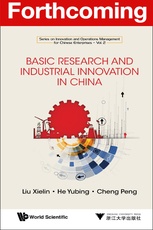
Basic Research and Industrial Innovation in China
-
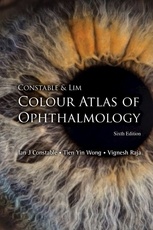
Constable & Lim Colour Atlas Of Ophthalmology: Sixth Edition
-
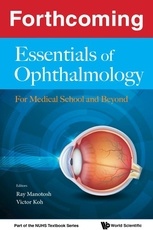
Essentials of Ophthalmology: For Medical School and Beyond
-
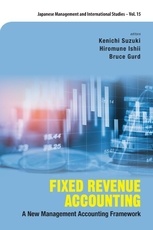
Fixed Revenue Accounting: A New Management Accounting Framework
All featured publishers and authors can avail of a free promotional interview on Enago Academy! Write to us now!
